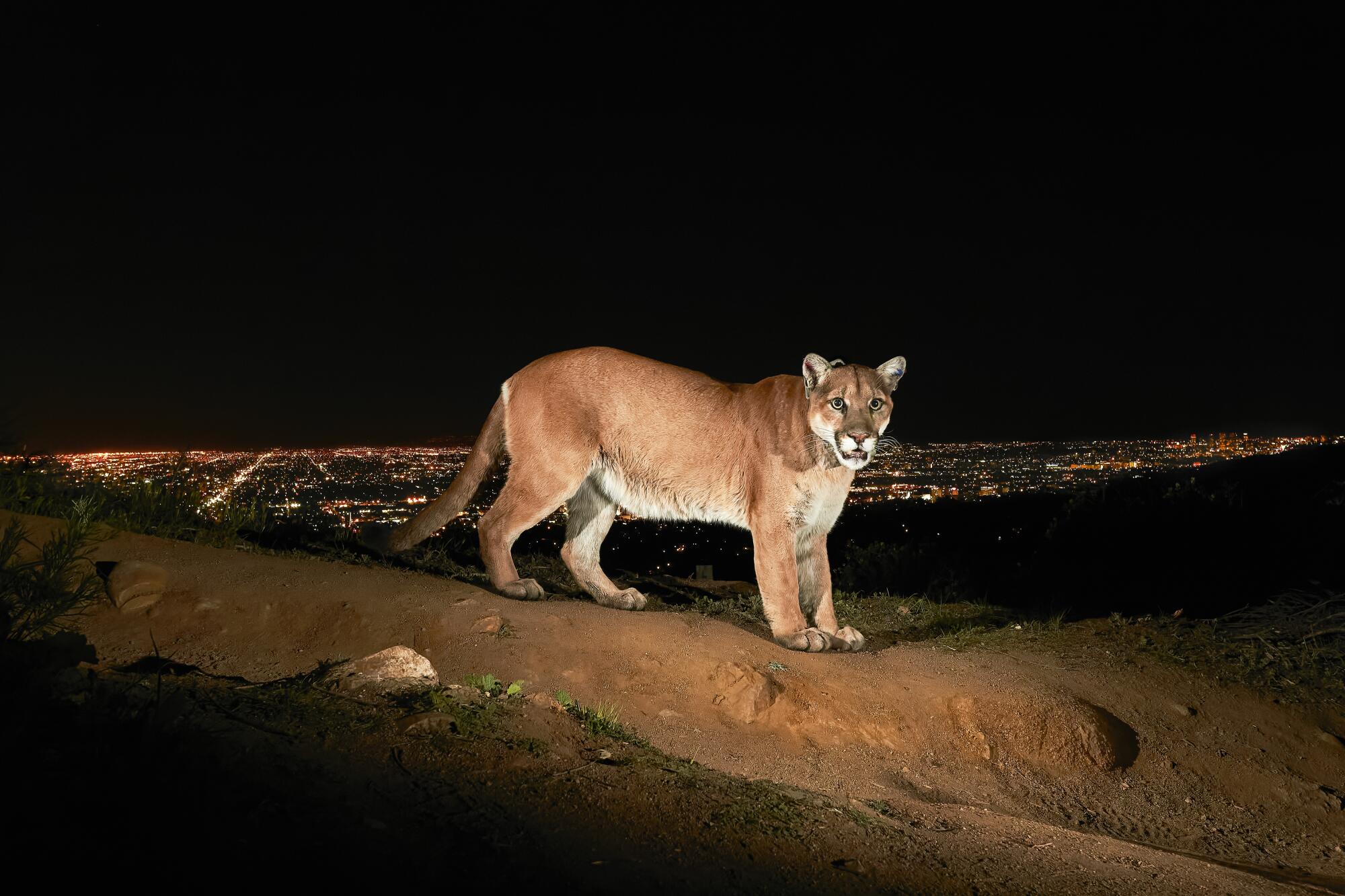
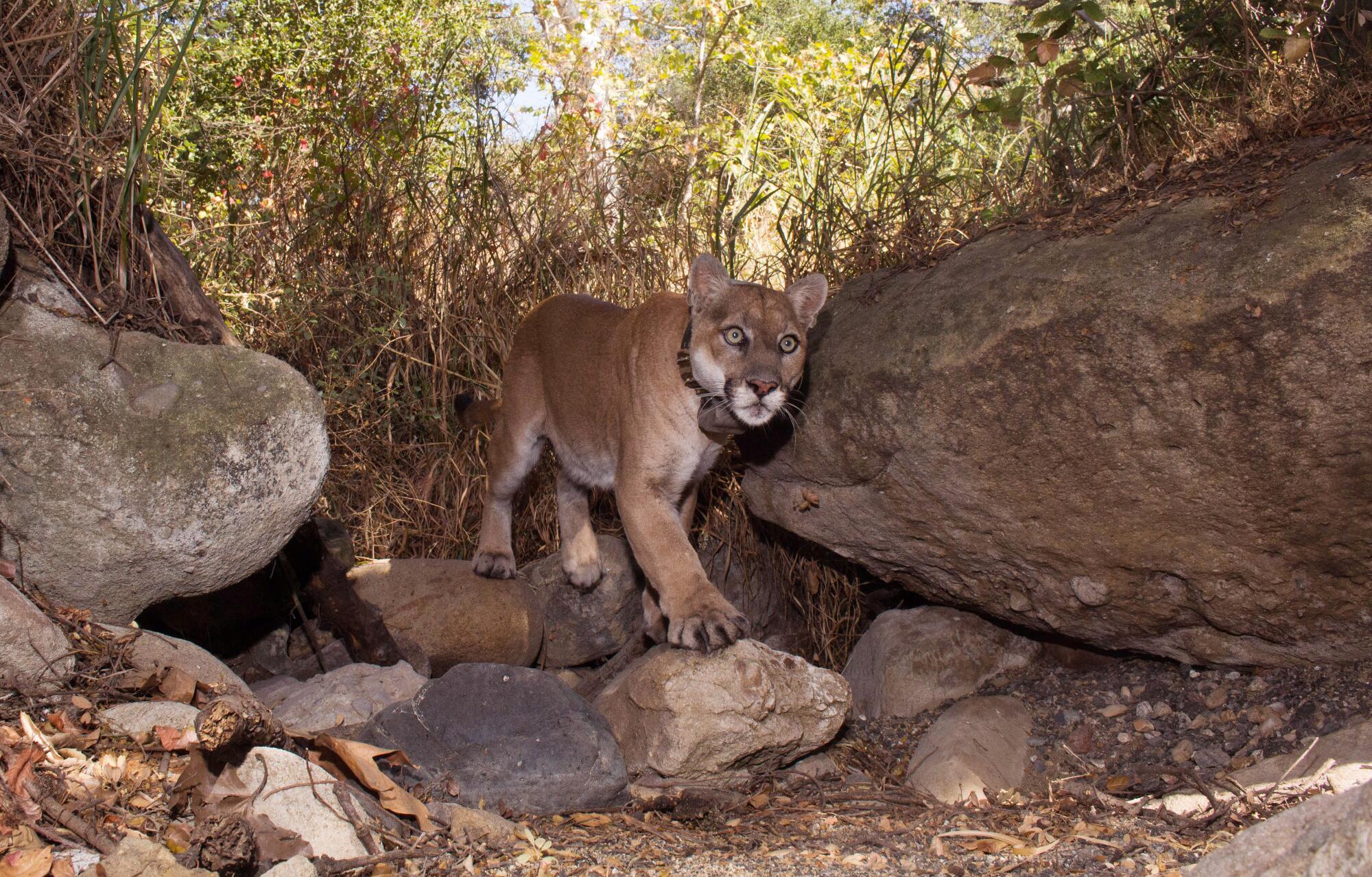
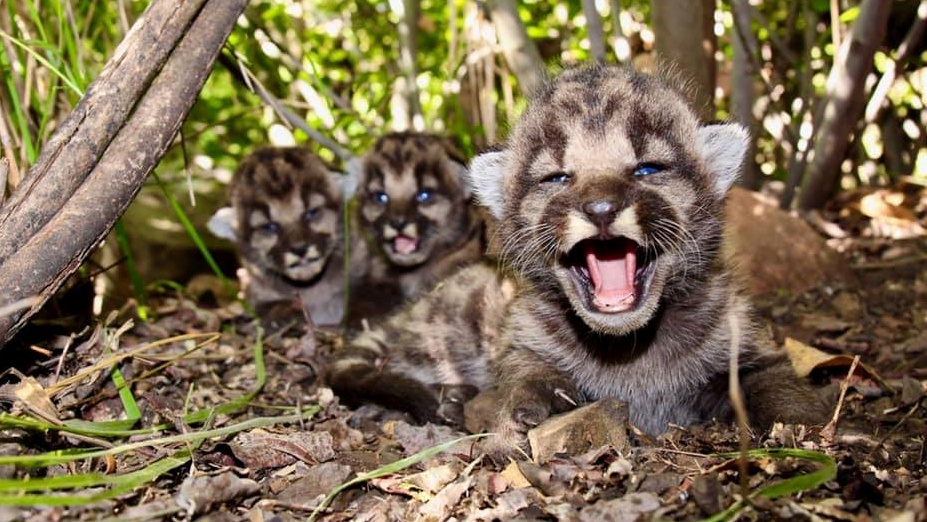
Canadian Yukon to the Southern Andes—the widest range of any large wild land mammal in the Western Hemisphere. Los Angeles is one of only two megacities (alongside Mumbai) with big cats living within city limits.
Ecosystems
Found in forests, chaparral, foothills, and mountains—anywhere prey like deer, elk, bighorn sheep, or feral hogs are present.
Home Range
Male: 100+ square miles // Female: 20-60 square miles.
For reference, P-22 lived in Griffith Park for 10 years, which is 6.5 square miles, the smallest recorded range of a mountain lion.
Population in LA County
10-15 adult cats
Size
Male: 115-220 lbs, Female 64-140lbs
Food
Eats about one deer per week, along with coyotes, raccoons, and rodents.
Personality
Solitary and territorial – marks territory with pheremones, claw marks, and scat.
Time of Day Active
From duck until dawn
Sounds
Growls, snarls, and hisses (cannot roar)
Other Names
Cougar, puma
Threatened
Yes
Mountain lions—also known as cougars or pumas—are a keystone species in Los Angeles County, essential to ecosystem health due to their far-reaching influence. Their presence has a impact of the structure, stability, and resilience of the ecosystems it inhabits:
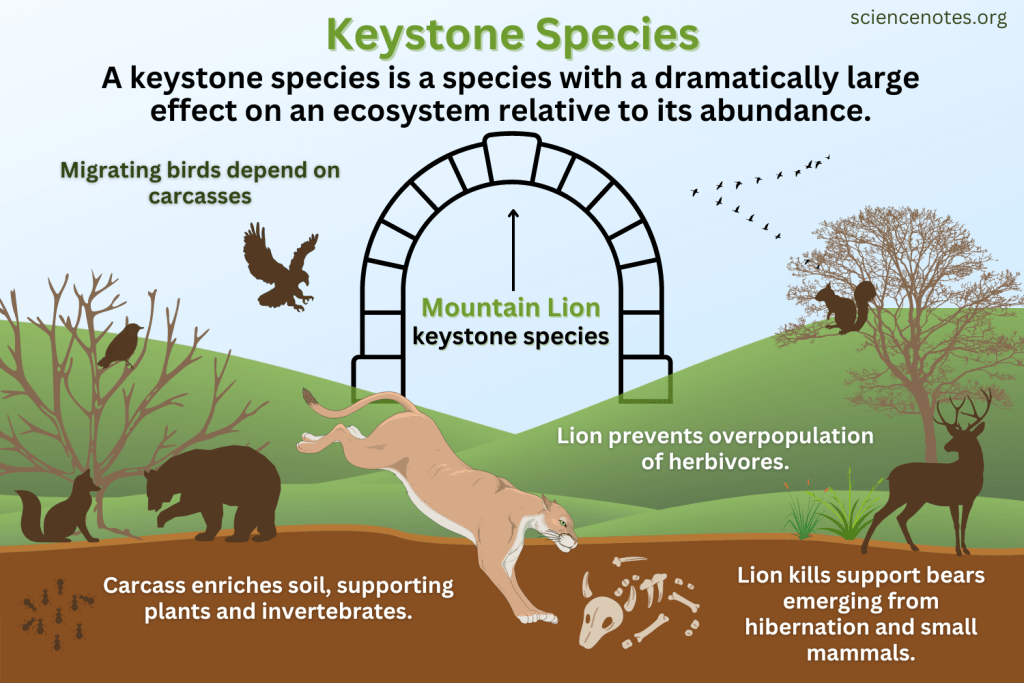
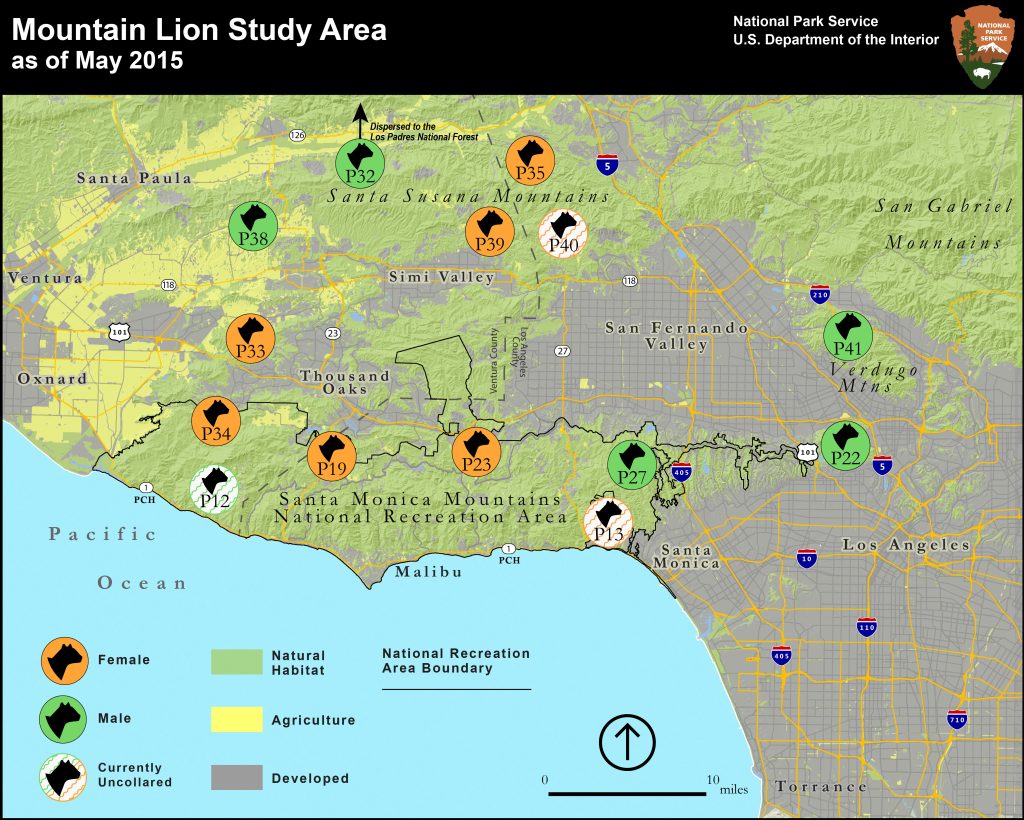
Mountain lions need vast territories to roam, hunt, mate, and survive. Male mountain lions are highly territorial and may even kill other males that encroach on their domain. However, in Los Angeles County, these animals face growing challenges as their habitats shrink due to urban hillside development. Freeways and busy roads create barriers that prevent mountain lions from traveling to other mountain ranges, isolating populations and threatening their long-term survival.
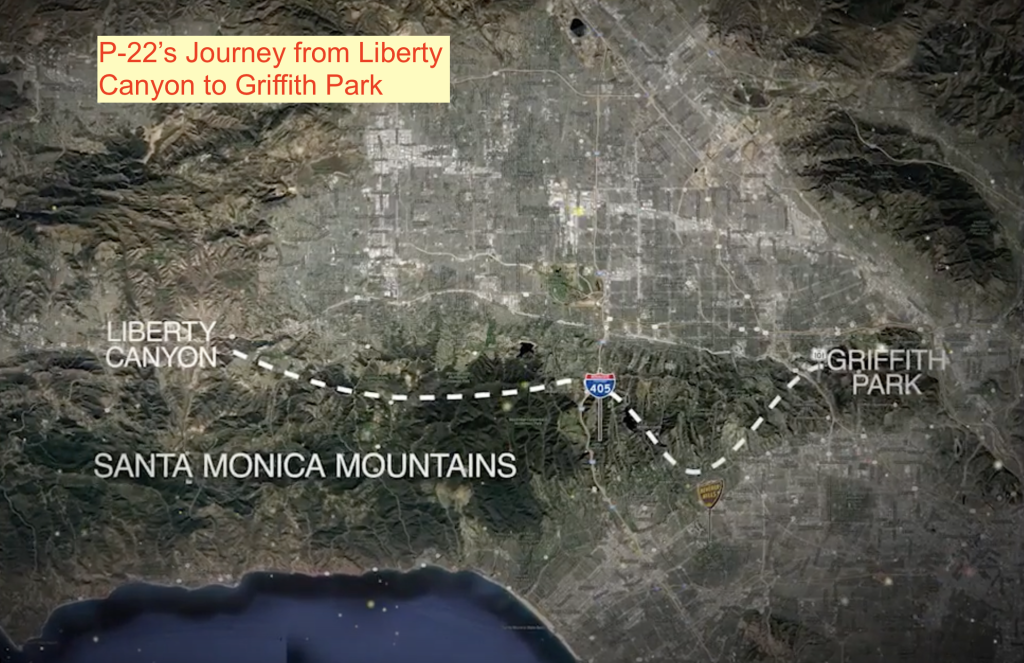
Mountain lion P-22 famously journeyed nearly 50 miles from the Santa Monica Mountains, crossing two of the nation’s busiest freeways—the 405 and the 101—to eventually make his home in Griffith Park. His remarkable trek likely took place during the 2012 closure of the 405, offering a rare window of opportunity to cross the otherwise impassable freeway. Watch this video to learn more.
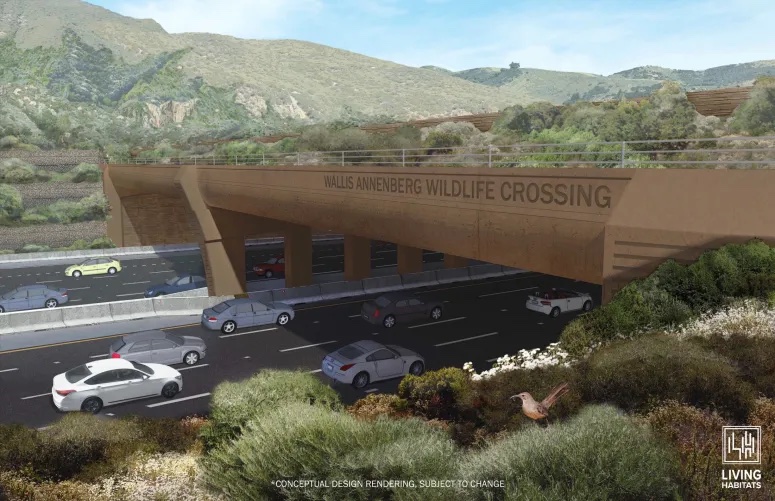
In response to the urgent need for habitat connectivity, the largest urban wildlife crossing in the world is under construction over the 101 Freeway, reconnecting the Santa Monica Mountains to the Simi Hills. Expected completion, 2026.
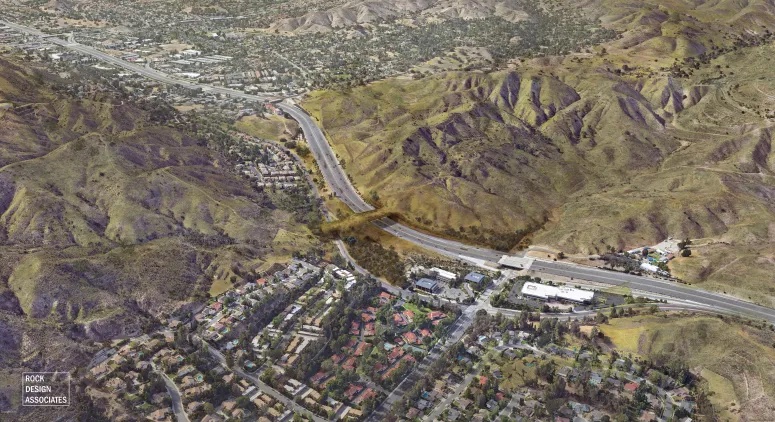
The crossing is especially critical for mountain lions in the Santa Monica Mountains, whose populations have declined and become genetically isolated due to the 101 Freeway, which blocks movement between their habitat and the Simi Hills to the north. Reconnecting these landscapes is essential to their long-term survival.
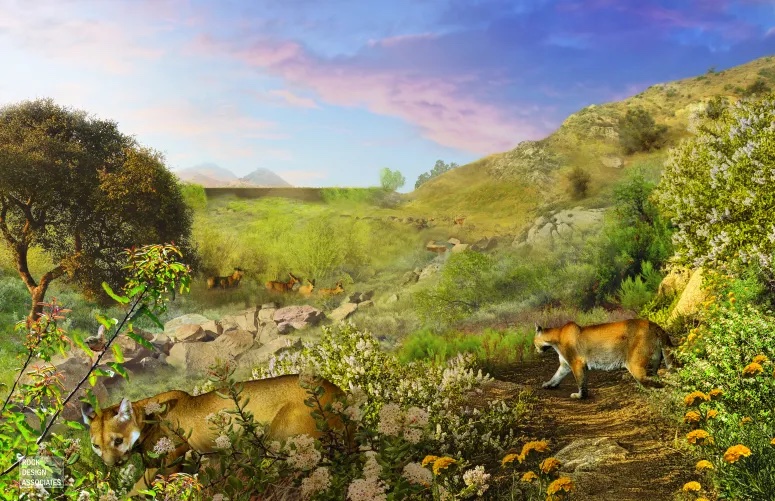
Other species expected to benefit from the crossing include bobcats, coyotes, gray foxes, birds of prey, skunks, rodents, American badgers, American Black Bears, fence lizards, and Mule deer.